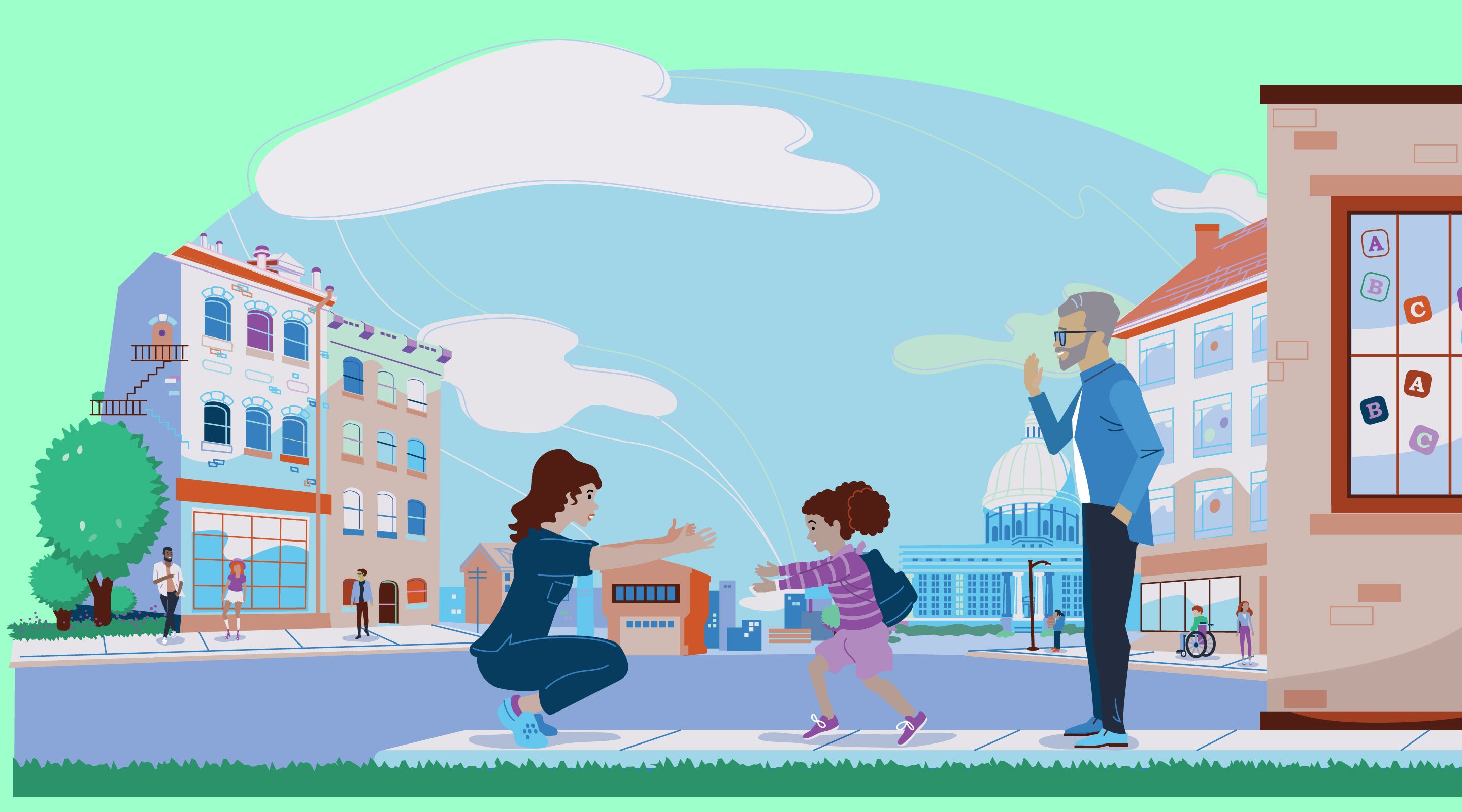
What makes primary prevention so effective?
It's because early prevention efforts—like policies that increase access to good jobs and homes, and affordable, nutritious food, for example—improve the conditions in which people live, play, and grow. A primary prevention policy like increasing access to high-quality, affordable childcare can reduce caregiver stress. Reducing that stress is shown to lower rates of child abuse and neglect in families. Preventing traumatic childhood experiences can improve a person's physical and mental health over time. And that means we can create lasting change that spreads across our whole community and throughout people's lives. Just take a look...
Individuals
Their Relationships
The Community
Our Society

What Surrounds Us Shapes Us
Look to Primary Prevention for Better Health
When we invest in primary prevention efforts that improve the conditions in which people live, work, and grow, we create lasting change that spreads across our whole community and throughout people's lives.
Working together, we can prevent health challenges rooted in trauma and adverse child experiences—like suicide, substance use, and overdose, and others—before the harm even happens. That's an outcome every public health professional can get behind. And with a little help, it's a strategy every public health organization can embrace.
Find out how ASTHO and public health agencies promote primary prevention to reduce adverse childhood experiences and build lifelong health.